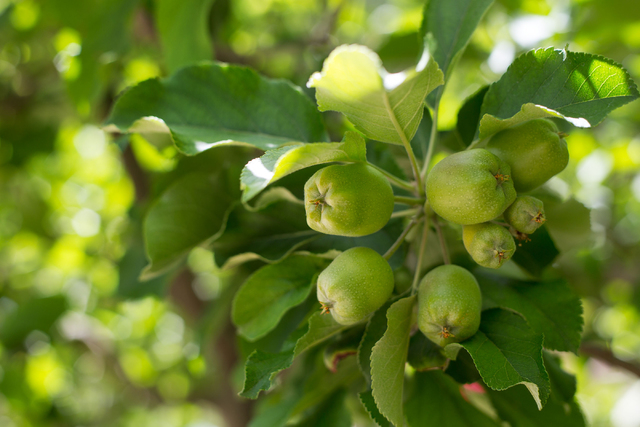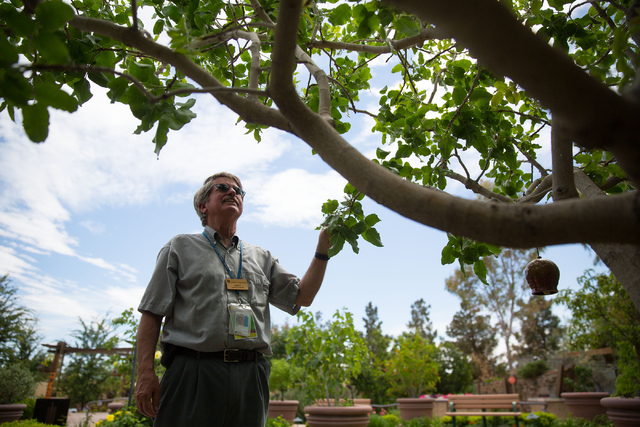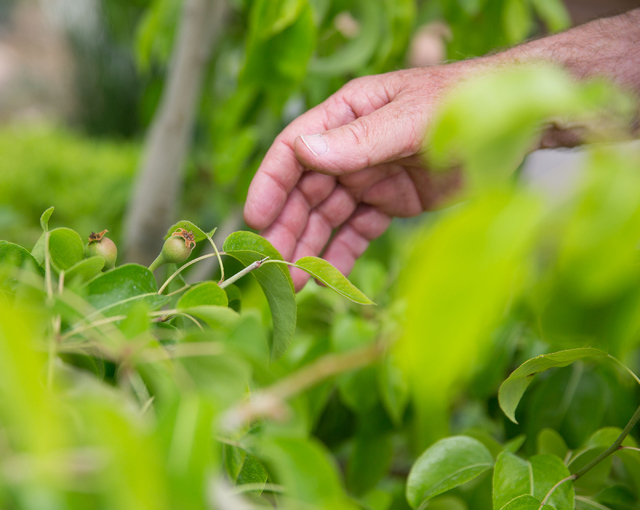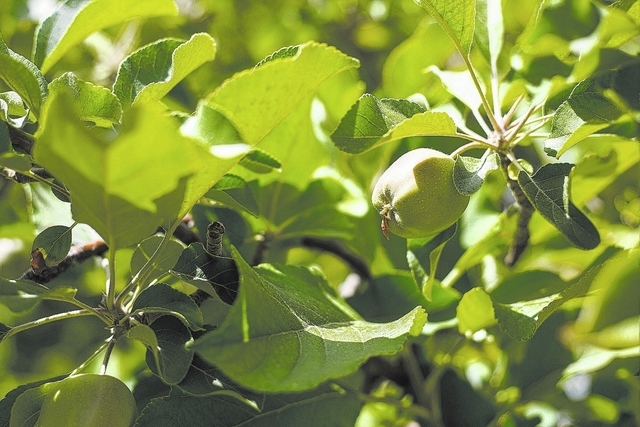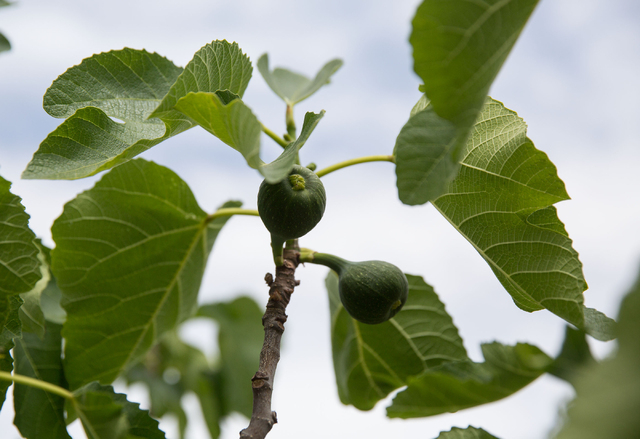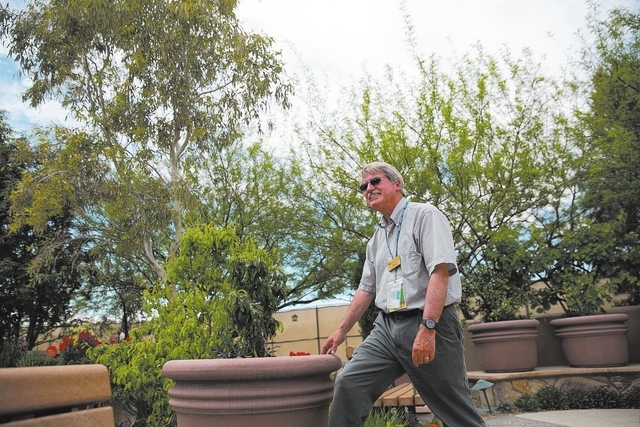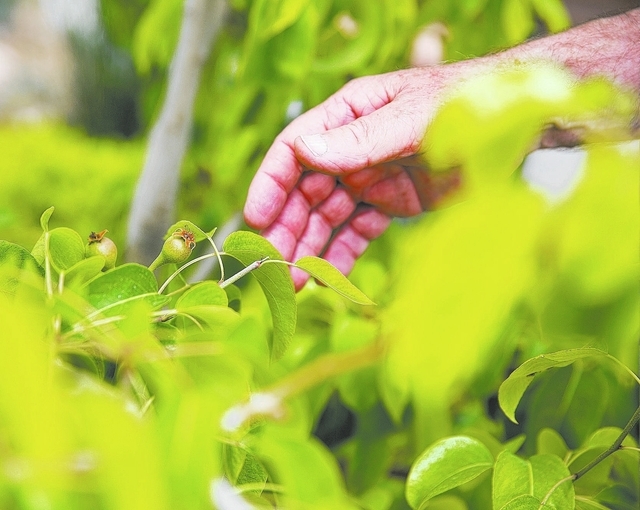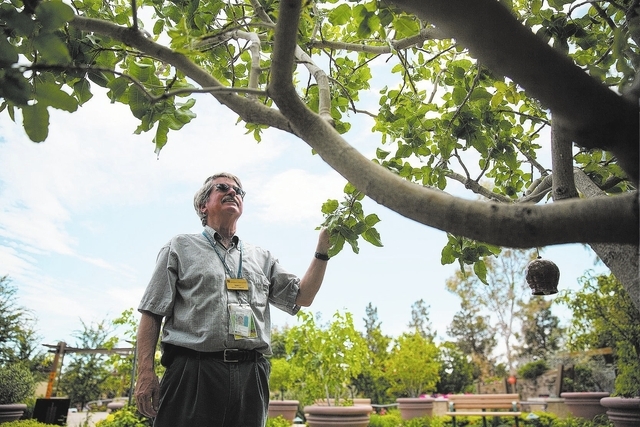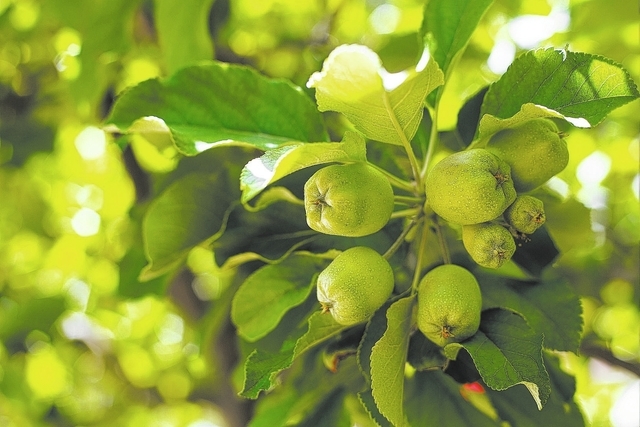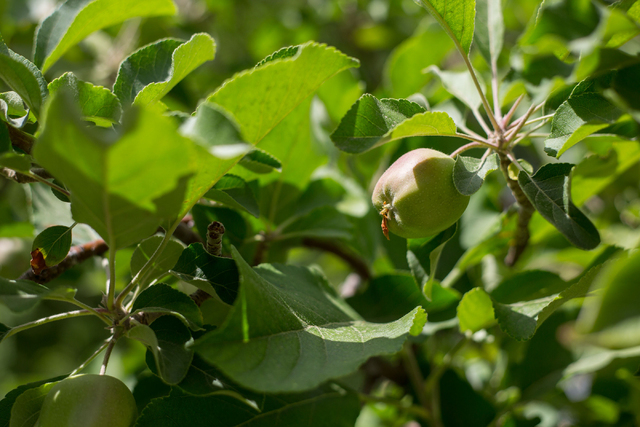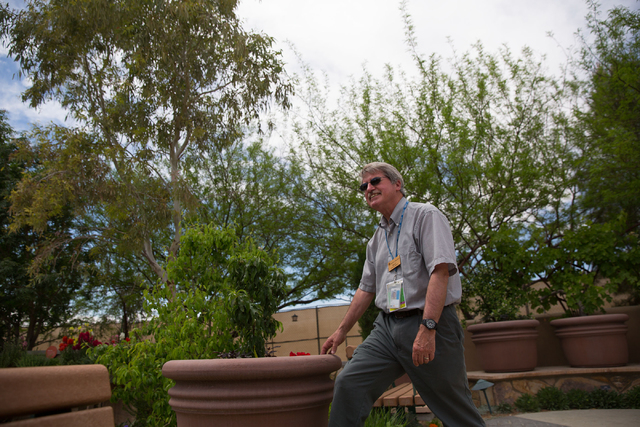Trees bear fruit in desert
Everyone loves summer for any number of different reasons. One very sweet reason is all the summer fruits that become available, such as plums, peaches, cherries and nectarines. Even though Southern Nevada is a desert, there are a number of fruit trees that grow well here and could turn your backyard into a popular, neighborhood fruit market.
Brian Adams, general manager at Plant World Nursery, said even though it’s mid-April, there is still time to get fruit trees into the ground.
“I have all kinds of fruit trees here, including peach, apricot, nectarine, plum, pomegranate and apple,” he said. “They are in 5- and 15-gallon containers. The difference is the 15-gallon trees have a larger trunk, are taller and a bit older. Some even have small fruit on them but that fruit doesn’t taste very good. You can get fruit in the first year, but the fruit gets better with each passing season and that could be anywhere from two to five years.”
Adams believes peach, apricot and nectarine trees do best in the desert climate, although proper watering and fertilizing can bring success with other trees as well.
“When someone buys a tree from us, I always ask if they know how to properly plant it,” he said. “The trees need to get into the ground and into a hole that is wide and deep enough depending on the size of the tree. We have professional people who can help with the digging and planting. Then the tree needs regular watering and I suggest supplementing that with regular watering by hand during the first month or so, especially as the days get hotter. Consider a newly planted tree as a baby that needs a lot of care and attention.”
Adams suggests planting the tree in a location that gets good morning sun and shaded or filtered afternoon sun.
Over at the Springs Preserve, Tracy Omar, science and garden supervisor, said preparing the soil prior to planting is vital.
“Make sure to dig the hole at least twice as big around as the container you are putting in ground,” he advised. “Fill half the hole with soil and the other half with organic matter or mulch. Most nursery-grown fruit trees have been well-fertilized so they don’t need to be heavily fertilized in the initial planting.”
Omar, who has a mature apricot tree in his own backyard, said his biggest challenge, once the fruit appears, are the birds.
“This is going to be an interesting summer,” he said. “We had an early spring and no late frost so fruit trees throughout the valley should be heavy with fruit. The problem is twofold: the first is that many blossoms appeared in clusters on the branches this spring and it’s possible that all those clusters, meaning three or four blossoms, were each pollinated by all the honeybees we saw. Therefore, each blossom will try to grow a fruit and that will tightly pack the tree.
“Then there are the birds, which is my second problem. They always seem to get out there the day before I plan to harvest some of my apricots. I’ll be putting bird netting on the tree, which is just a plastic net with half-inch holes. It drapes over the tree and is loose enough to let sun through, but uncomfortable for birds to rest on it.”
Omar said if a tree does get heavy with fruit, feel comfortable to pick the fruit and let it ripen in the house.
“All of us have heard about how sun-ripened fruit is so much sweeter, but go ahead and pick it green and let it ripen in house,” he said. “There’s nothing wrong with that. Put the fruit in a cool, dark place and it will ripen nicely.”
As summer wanes and fall approaches, Adams and Omar both suggest planting trees that need a cooler environment to get started.
“Plant a fig or pomegranate tree in the fall,” Omar said. “They are similar in care and will respond to the same treatment that you are giving your other trees. And if you want to do something different, think about an almond or pistachio tree, which seem to be the only nut trees that grow in this environment.”
Late fall and early winter is also a good time to prune. According to Adams, there are no leaves on the tree during December and January and that makes its structure easily visible.
“It’s important to see where you are pruning and what limbs are crossing each other or rubbing against each other,” he said. “Since the tree is dormant, the pruning will not impact its growth. We have a long growing season and locals have learned what to do and have become very knowledgeable and successful with their fruits and vegetables.”
Omar said visitors to Springs Preserve always want a definitive answer to their growing questions but need to know there are no such answers.
“Mother Nature is Mother Nature,” he said with a smile. “We’re not Southern California and we’re not Phoenix. Many fruit trees do well here but don’t expect to find citrus trees. Believe it or not, it’s too cold here.”



